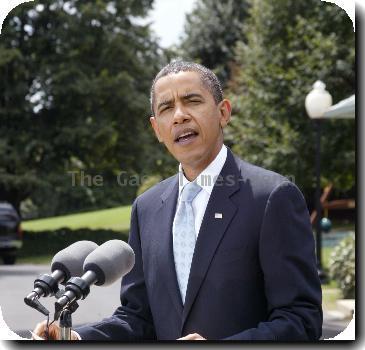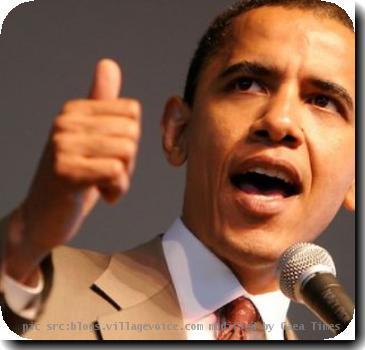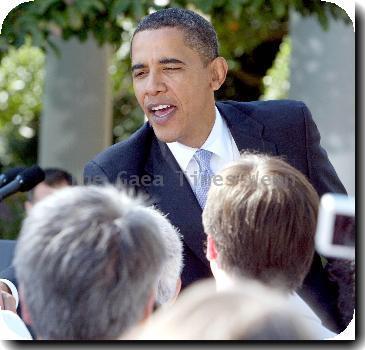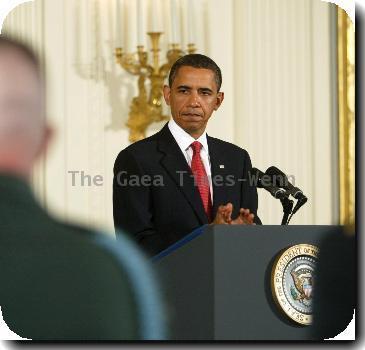Obama seeks tougher mileage, emission standards for cars and _ for the first time _ big trucks
By Ken Thomas, APFriday, May 21, 2010
Obama orders new fuel standards for future
WASHINGTON — President Barack Obama directed the government Friday to set the first-ever mileage and pollution limits for big trucks and to tighten rules for future cars and SUVs, setting the nation’s sights on vehicles that run on half the fuel they now use and give off half the pollution.
“The nation that leads in the clean energy economy will lead the global economy. And I want America to be that nation,” Obama declared at the White House as he signed a presidential memorandum that would reshape the country’s driving habits long after he leaves office.
With the catastrophic oil spill in the Gulf of Mexico underscoring the risks of America’s heavy reliance on fossil fuels, Obama gave federal agencies just over a year to come up with fuel efficiency and greenhouse gas emission standards for commercial trucks and buses.
Such vehicles are big polluters and fuel consumers even though they’re far outnumbered by passenger cars. The Union of Concerned Scientists, an environmental advocacy group, said large trucks represent about 4 percent of all vehicles on U.S. highways but devour more than 20 percent of fuel.
According to the Environmental Protection Agency, commercial trucks account for 21 percent of greenhouse gas emissions in the transportation sector — compared with 33 percent for passenger cars and 29 percent for SUVs, pickups and minivans.
The new standards, to be issued in July of next year, would apply to big trucks and buses for model years 2014-2018.
At the same time, the EPA and the National Highway Traffic Safety Administration will get to work on stricter standards for cars and light trucks like SUVs to kick in with the 2017 model year and carry through 2025.
A year ago, Obama announced plans for the first federal regulations of fuel efficiency and greenhouse gas emissions in cars and light trucks, for the 2012-2016 model years. Those standards, rolled out last month, aim at reaching a fleet average of 35.5 miles per gallon by 2016, nearly 10 miles per gallon better than the current average.
“The disaster in the Gulf only underscores that even as we pursue domestic production to reduce our reliance on imported oil, our long-term security depends on the development of alternative sources of fuel and new transportation technologies,” the president said.
“I believe that it’s possible in the next 20 years for vehicles to use half the fuel and produce half the pollution that they do today.”
Obama also asked the Department of Energy to work with carmakers and others to promote the development of advanced vehicles including plug-in hybrids and electric cars, and to give technical help to cities preparing for them.
Obama moved forward with Friday’s announcement as a climate bill with much wider-ranging provisions awaited action in the Senate, its future uncertain. But Obama can take significant steps on fuel efficiency without Congress and once again showed his determination to do so, the Gulf oil spill acting as a spur.
Indeed the president is ahead of schedule compared with what he promised as a candidate. On the campaign trail, Obama pushed for the standards to increase 4 percent every year, which would have resulted in new cars and trucks achieving a fleetwide 40 miles per gallon by 2022.
The big truck industry has known for years that fuel efficiency regulations were coming. Clayton Boyce, vice president of the industry trade group American Trucking Association, said the industry supported fuel efficiency standards, but the new plans could be controversial if the administration went too far.
Steve Graham, a vice president at Schneider National, one of the nation’s largest trucking companies, said truck prices could rise significantly as manufacturers make the changes need to comply with new rules. While it’s good to pursue fuel efficiency, “we have to be mindful of unintended consequences,” said Graham.
Automakers have sought the certainty of firm standards several years into the future. General Motors Co. said in a statement that “working toward one strong, yet feasible, national program helps GM and other automakers get advanced technology vehicles to consumers quicker and more cost effectively.”
What automakers have tried to avoid is a state-by-state approach, a threat since California began agitating years ago to be able to adopt stricter standards than the federal government. California agreed last year not to adopt its own standards through 2016, but without federal action the state was preparing to impose tougher requirements beginning in 2017.
Environmentalists applauded Obama’s announcement.
“These are important steps to cut our oil dependence and carbon pollution,” said David Doniger of the Natural Resources Defense Council.
AP Transportation Writer Samantha Bomkamp contributed to this report.
Tags: Accidents, Air Quality, Barack Obama, Energy, Energy And The Environment, Environmental Activism, Environmental Concerns, Environmental Laws And Regulations, Government Regulations, Industry Regulation, North America, Oil spill, United States, Washington




